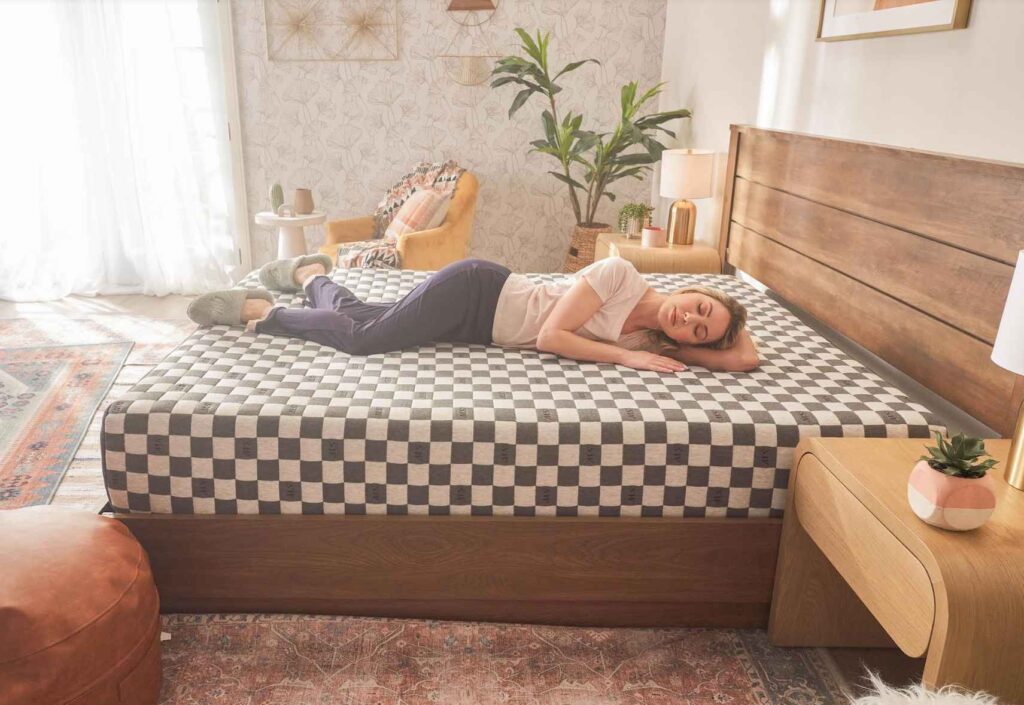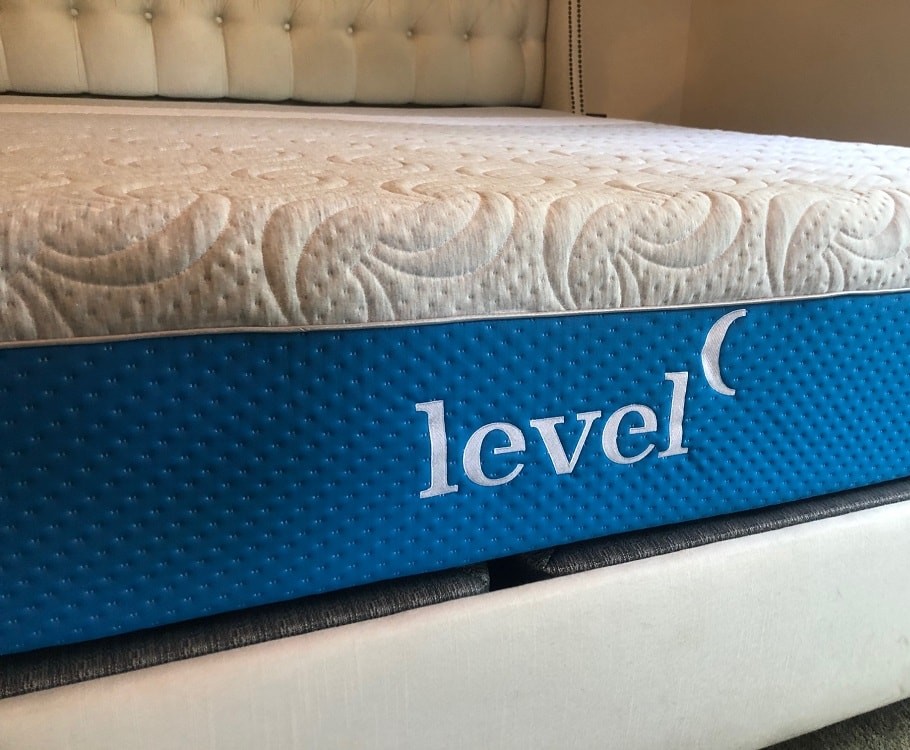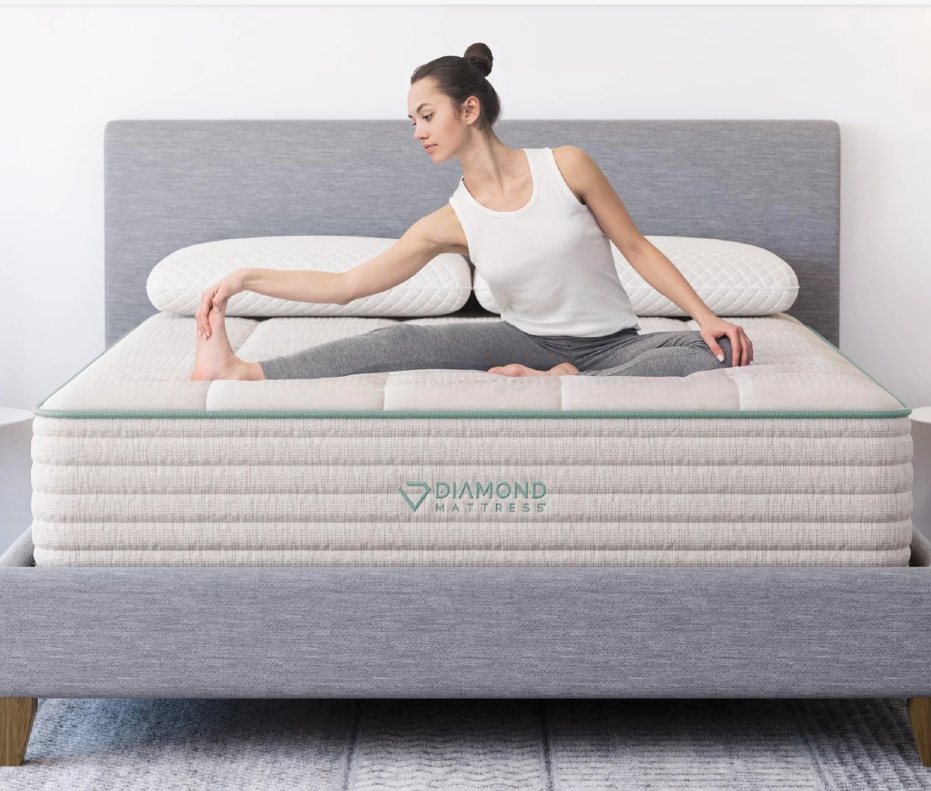The Best Mattresses For Migraine Headache Relief
I’ve tested and reviewed some of the best mattresses for migraine headaches that can reduce frequency and duration, relieve pressure, and promote restorative sleep to help minimize recurrence. Some studies estimate that as many as 12% of U.S. adults have migraines and up to 4 million experience chronic migraines. If you suffer from frequent migraines, you know they’re much more than just a headache.
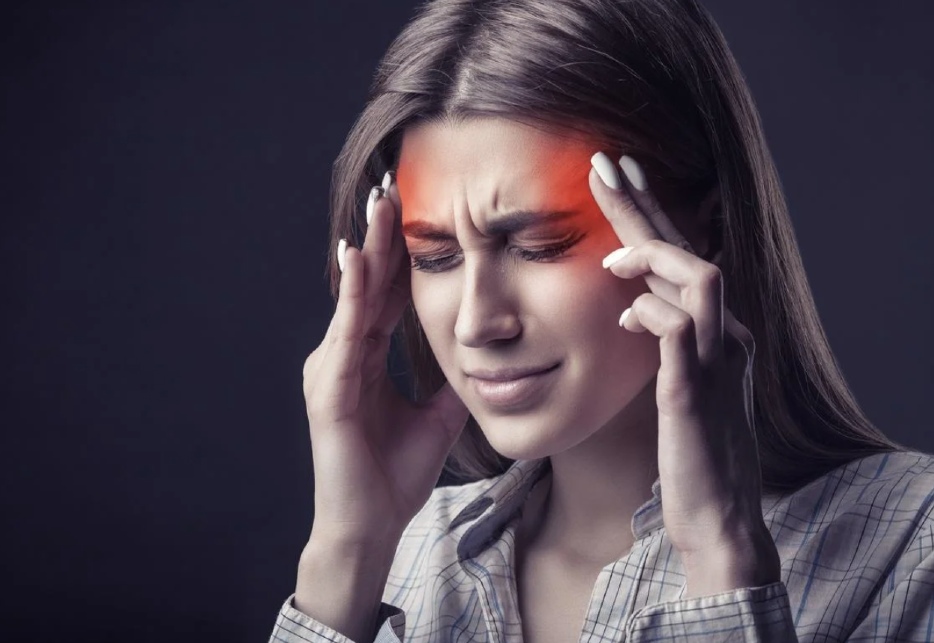
In fact, migraine headaches can deprive you of the restorative sleep you need by draining the energy that you need to enjoy life. For 90% of people who experience regular migraines, symptoms can prevent you from functioning normally and may cause you to miss work, family events, and can even lead to other health problems as well.
Sleeping on the right mattress is one way you can not only reduce the frequency and duration of migraines, but choosing the best pillow for migraines can improve every aspect of your life, give you renewed energy, stamina, and vigor.
But, with so many choices to make, unless you are a mattress expert and understand the ingredients and specialized components that make up a mattress, it’s impossible to narrow down the options.
In this article, we’re going to explore the subject of migraines including the symptoms and triggers. We’ll take a look at the importance of a good night’s sleep and how changing your mattress might help reduce the frequency or severity of your migraines. The best mattresses for migraine headaches include a variety of mattresses from all foam, hybrid foam and coil, latex, and airbeds. I’ve included brands I recommend as options for best mattresses for migraine headaches.
Best Mattresses For Migraine Headaches: How Migraines Are Triggered
Often described as an intense headache, a migraine is actually a neurological condition. Migraines are characterized by severe, crushing, and often debilitating headaches and may cause additional symptoms like nausea, vomiting, difficulty speaking, sensitivity to light, and numbness or tingling. They affect people of all ages but typically begin in adolescence or early adulthood and often run in families.
The exact cause of migraines is not well understood, but they are believed to be a result of complex interactions between genetic, environmental, and neurological factors. Several potential triggers and contributing factors have been identified, including:
- Genetic factors: Migraines tend to run in families, suggesting a genetic component. Certain genes have been associated with an increased susceptibility to migraines.
- Neurological factors: Migraines are thought to involve abnormal brain activity, specifically involving the trigeminal nerve, which is a major pain pathway. Changes in the brainstem and the release of certain chemicals, such as serotonin, have also been implicated.
- Hormonal changes: Hormonal fluctuations, particularly in women, can trigger migraines. For some women, migraines are linked to their menstrual cycle, with attacks occurring before, during, or after menstruation.
- Triggers: Migraines can be triggered by various factors, which can vary between individuals. Common triggers include certain foods (e.g., aged cheeses, chocolate, processed meats), alcohol (especially red wine), caffeine, food additives (e.g., monosodium glutamate), irregular meal patterns, dehydration, sleep disturbances, stress, sensory stimuli (e.g., bright lights, strong smells), changes in weather, and physical exertion. Chemical smells can also trigger migraines.
- Environmental factors: Certain environmental factors, such as strong smells, secondhand smoke, loud noises, and bright or flickering lights, can trigger migraines in susceptible individuals.
- Medical conditions: Migraines can be associated with other medical conditions, such as depression, anxiety, sleep disorders, and chronic pain conditions.
It’s important to note that triggers and factors influencing migraines can vary greatly among individuals. Identifying and managing individual triggers, as well as adopting a comprehensive approach that may include medication, lifestyle modifications, stress management, and other interventions, can be helpful in reducing the frequency and severity of migraines.
As part of your sleep hygiene regimen, there are numerous things you can do in addition to buying the best mattresses for migraine headaches to reduce triggers. Our discussion of the best mattresses for migraine headaches isn’t complete without improving your sleep behavior. Click here for additional information about sleep hygiene on our site.
How Are Headache And Back Pain Diagnosed?
When diagnosing headache and back pain, your doctor will first perform a physical exam and take your medical history. They’ll want to know things like:
How long you’ve been experiencing migraines, intensity and location of the pain, frequency, and triggers
If you’ve been experiencing any additional symptoms
Your doctor may then perform some additional tests to make a diagnosis. These may include:
You’ll likely get a full assessment of your ability to perform simple tasks like standing, walking, and sitting, as well as undergoing a variety of tests and metrics such as:
A neurological exam, which can include testing things like reflexes
Blood tests, which can include things like a metabolic panel or complete blood count (CBC)
Imaging tests, which can include X-rays, CT scan, or MRI scan, and even electromyography (EMG), all of which measure the electrical signals from your nerves, along with muscle response.
- A discussion of your current mattress and bedroom to evaluate triggers. Finding the best mattress for migraine headaches begins with an accounting of your sleep hygiene.
Once you’ve been properly diagnosed with migraine headaches, your provider will work with you to develop a treatment plan that’s ideal for your situation. Some examples of treatments for headache and back pain include the following:
Getting plenty of rest and productive REM sleep every night, on a mattress that contains the materials designed to reduce pressure, properly distribute body weight, and provide enough support to allow your spine and neck to remain properly aligned as you sleep
Apply hot or cold compresses to your head, neck, or back.
Try over-the-counter (OTC) nonsteroidal anti-inflammatory drugs (NSAIDs) for pain relief. Examples include aspirin, ibuprofen (Advil), and naproxen sodium (Aleve).
Use prescription NSAIDs or muscle relaxants if OTC medications don’t work for pain. In rare cases, opioid medications may be administered for crushing or unbearable pain.
Take low doses of tricyclic antidepressants, which can actually help with back or headache pain.
Try getting cortisone injections, which can help relieve back pain. These injections can be very productive, since they can calm nerves, reduce inflammation where nerves pass through vertebrae, and reduce swelling in joints, and in muscle and connective tissue.
Get regular massages to loosen tight muscles.
- Reviewing your sleep hygiene and considering options for the best mattresses for migraine headaches.
If an underlying condition is causing your headache and back pain, your provider will attempt to treat that as well. For example, if a bacterial infection is the actual underlying cause of your condition, they may prescribe antibiotics.
You may be wondering, “Can my mattress help my migraines?” Often, health care providers don’t make the connection that migraines are often associated with back pain which is aggravated by a poor quality mattress.
In our reviews of the best mattresses for migraine headaches below, we’ll give you several options for mattresses that can reduce pressure by properly distributing weight, improve your deep and restorative REM sleep, and possibly decrease both the frequency and level of pain you experience with migraines.
How To Prevent Migraine Headache Often Associated With Back Pain
The best mattresses for migraine headaches properly support your neck and back by reducing pressure points, increasing circulation, and providing enough buoyant support to allow easy movement during the night.
Migraines can be caused by many traumatic injuries, infections, and other medical conditions like pre-menstrual syndrome in women. In some cases, headache and back pain can be relieved with rest and at-home care.
However, if the pain persists, is severe, or affects your ability to function, you may need intervention. Starting with your sleep hygiene, including getting the right mattress, can make a huge difference in your outcome and can even eliminate migraines completely. My list of the best mattresses for migraine headaches might offer you a better solution than your existing mattress, especially if you have little or no relief from ongoing headaches.
Anatomy Of A Migraine Headache
A migraine typically consists of several stages that can last for days. A day or two before the migraine begins, symptoms may slowly emerge. This is known as the pro-dome stage, in which you may notice subtle warnings of an impending migraine – changes in mood, food cravings, neck stiffness, and frequent yawning.
Also known as “pre-headache” or premonitory phase, prodrome essentially marks the beginning of a migraine attack. This phase can last several hours or may even occur over several days. Most people with migraine will experience prodrome, but not necessarily before every migraine attack.
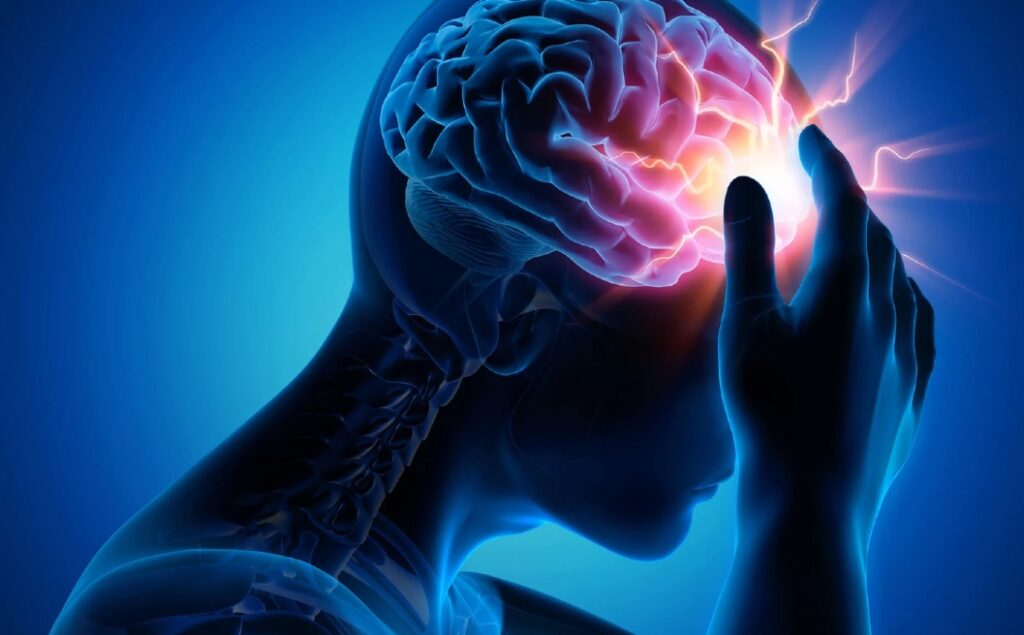
During prodrome phase, many sufferers experience an aura characterized by visual phenomena, vision loss, or uncontrollable jerking movements before or during a migraine.
A migraine attack usually lasts from 4 to 72 hours, if not treated. During a migraine, you can experience throbbing or pulsing pain, typically both sides of the head, rather than isolated to one side. Nausea and vomiting may occur, and you can become more sensitive to light, sound, even touch or smell.
Following the migraine, a period called the post-drome stage occurs, in which you emptied, completely exhausted, and even confused for up to a day.
The exact cause of migraines is poorly understood, though researchers suggest genetics and environmental factors may have a role in the physiology of the disease. Though the underlying cause of migraines is unknown, there are several common triggers:
Stress
Strong sensory stimuli
Changes in sleep
Intense physical exertion
Changes in weather
Certain foods or food additives
Hormonal changes in females
- Chemical smells, fragrances
The best way to prevent or at least minimize the effects of migraines is to know your triggers and to avoid them as much as possible. Stay hydrated, avoid skipping meals, and get plenty of sleep on a quality mattress that provides appropriate spine and neck support. Keeping the pressure off of your neck, back, and the vertebrae along your spine can reduct nerve pressure and inflammation.
If you find yourself waking up with frequent migraines, your mattress and pillow could easily be a strong trigger mechanism. The wrong mattress can affect the quality of your sleep which could increase your risk for developing a migraine. Poor spine alignment could also contribute to headaches.
How Changing Your Mattress Can Make A Huge Difference In Managing Your Migraines
There is no miracle migraine-curing mattress out there, but it’s a very real possibility that your mattress has something to do with the frequency with which you experience migraines. And, trying to buy the best mattress for migraine headaches in general can be challenging because of specific elements and components needed to really work.
Most significantly, a poorly made or improperly designed mattress prevents your body from getting the support it needs which affects the quality of your sleep. Most mattresses are made using inferior components, like low density foam layers that easily collapse or bottom out, causing curvature at the neck and spine, lower back, and even joints in your legs and arms.
In my experience many people who suffer from migraines are also hot sleepers, especially post-menopausal women, and in today’s world, there is no need to suffer with hot flashes, night sweats, or simply tossing and turning because your mattress is cooking you in bed.
There are many cooling fabrics, specialized gel foams, and pocketed coil systems that remove heat away from your body and ventilate your mattress, keeping it cool and comfy all night.
When you don’t sleep well, your body doesn’t function efficiently, and if you are not well rested, you may be more likely to experience a migraine. Also, if your mattress is fairly new, it could have something to do with the materials in the mattress, too, including chemical smells or fragrances, which can often trigger migraines.
The mattresses I have chosen on this page are all made using Certi-Pur® certified foams, that is, layers of foam and textiles made using low VOC components, with no fragrances or chemical odors.
If you find yourself waking up with headaches, it could be caused by strained neck muscles. If your mattress isn’t supporting your spine, sleeping in an awkward position could make your head throb and trigger a migraine to begin.
What Materials Should You Avoid When Choosing A Mattress To Reduce Migraines?
You spend about a third of your life sleeping, so it’s easy to understand how the quality of your mattress affects your health. What you may not realize, however, is that the materials from which your mattress is made are just as important to consider as the construction and firmness of the mattress itself.
Memory foam and gel foam are two of the most popular materials for modern mattresses – these mattresses receive high customer ratings for comfort and durability. This material conforms to the body, relieving pressure without compromising support. The trouble is, the materials from which memory foam is made can be quite dangerous, depending on the quality.
The primary material used to make memory foam is polyurethane. Most memory foams contain other chemicals as well that increase the viscosity and density. Prolonged exposure to some of these chemicals has been linked to symptoms including headaches and respiratory issues.
All polyurethane foams, both natural and synthetic, contain chemical ingredients, but some mattress companies adhere to strict standards to ensure the materials they use are made without volatile organic compounds (VOCs), heavy metals, formaldehyde, CFCs, and other harmful chemicals. In our list of mattresses below, any mattress containing synthetic foams are Certi-Pur certified.
If you want to avoid contact with synthetic foams entirely, I’ve recommended several brands of 100% pure botanical latex in my suggestions below, which are hypo-allergenic, naturally anti-microbial, and free of fragrances and odors.
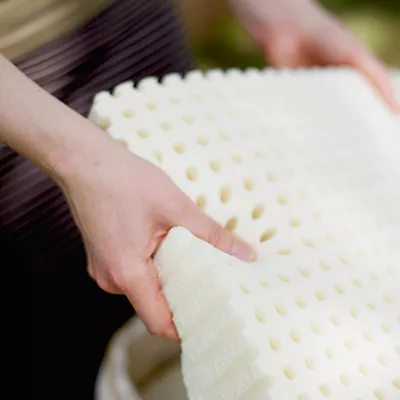
Natural latex is more expensive, but because it is harvested from a 100% botanical source, it contains zero petroleum products. You can learn more about natural latex here.
When I was in the retail mattress business, I manufactured a lineup of natural latex mattresses and had a large following of customers who enjoyed reduced migraine intervals, reduced duration and intensity, and slept better on a natural latex mattress.
I’ve included several considerations below that I highly recommend if you want to go with a greener mattress option. Keep in mind that natural latex is heavier and harder to handle and move, and tends to cost about 25% more than conventional foam or foam/coil hybrid options.
If you’re shopping for a memory foam mattress, choose one that carries a CertiPUR-US® certification. Oeko-Tex Standards set limits for harmful chemicals as well and mattresses that contain latex should meet the Global Organic Latex Standard (GOLS).
When it comes to choosing a mattress, the primary concern for migraine sufferers is support. Research shows that interrupted sleep can trigger a migraine, though the exact connection isn’t fully understood. Quality sleep requires both comfort and support, so look for a mattress that suits your preferences for firmness and construction but that also supports proper spine alignment.
TIPS WHEN SHOPPING FOR A MATTRESS TO HELP REDUCE MIGRAINE FREQUENCY AND DURATION
Materials: Modern mattresses incorporate a variety of materials like memory foam, latex, gel foam, and coils – choose a mattress that feels comfortable and supportive to you. I have narrowed down the mattress options on this page to include mattresses made with cleaner memory /gel foam, natural latex, and individual pocketed oil systems only, along with natural fibers, like bamboo, cashmere, organic cotton, and wool textiles in the outer cover or on the top section of the mattresses in my list.
Support: Proper support based on your body weight and sleeping style are essential, so make sure your new mattress has a strong base layer.
Pressure Relief: Also known as ‘comfort,’ pressure relief comes from softer materials in the upper layers of the mattress that conform to your curves to prevent pressure points.
Motion Isolation: If you sleep with a partner, motion transfer may be a key concern – memory foam tends to be a good option or individually encased springs rather than a continuous coil.
Firmness: A little sink is ideal, because it’s good for comfort and pressure relief, but you need to find a firmness level that supports proper spine alignment based on your body weight and sleep position.
The Best Mattress For Migraine Headaches, According To A 25 Year Mattress Industry Veteran
5G And EMF Shielding Mattress: The Anti-Aging Bed®
Hybrid mattress featuring EMF and 5G radiation shielding system. FDA backed technology using static and charge removal surface. Triggers for migraines can be directly associated with electromagnetic radiation.
Called the “Bio-Hack” bed, get detox, remove free radicals, and get restorative and recharged rest. Requires outlet for grounding. I’d give this mattress a whirl if you are exposed to a lot of EMF and have a lot of screen time grinding you down.
Migraines are often caused by unseen stressors. This mattress calms and soothes by removing toxins and electronic waste from your body.
FDA proven technology and certification.Order the Anti-Aging Bed® Mattress, or just the cover only for existing mattress. For innovation and proven success with its owners, I rate this unique technology based mattress 5 out of 5 stars.
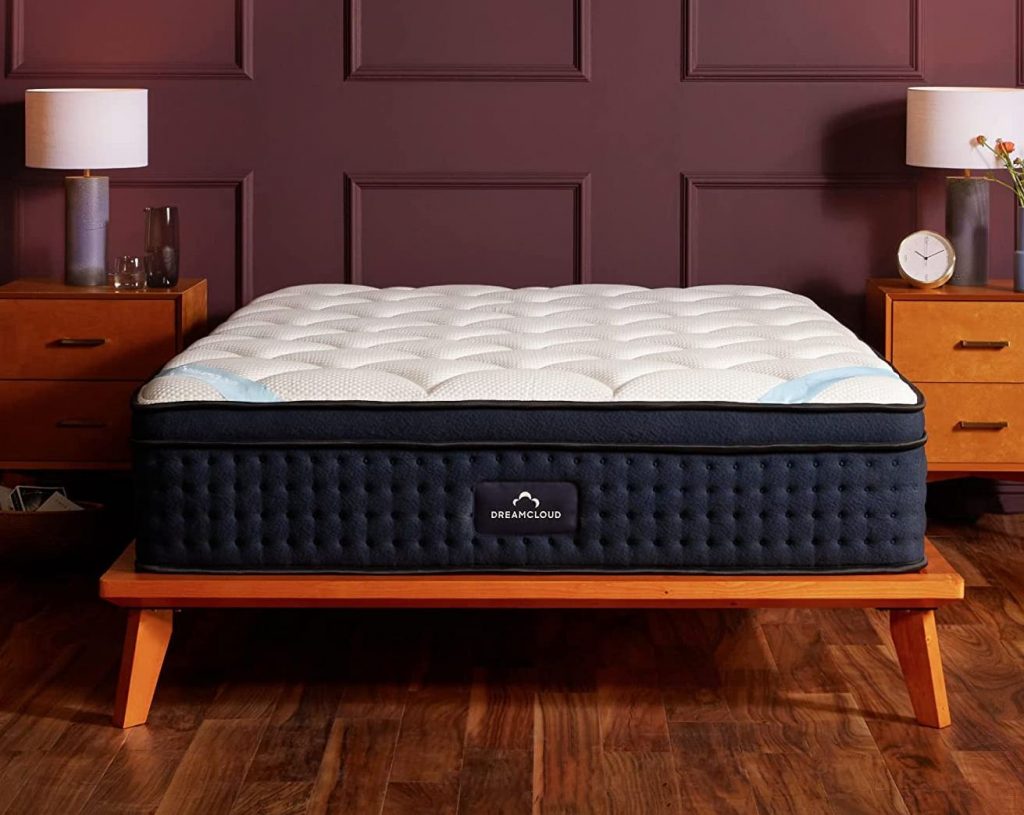
The Dreamcloud Luxury Hybrid Mattress
Described as a soft, breathable sanctuary, the Dreamcloud Luxury Hybrid is one of my favorites. With a sumptuous cashmere quilted top, floating pocketed coils, and a quality 4lb density gel infused memory foam, this bed keeps you in a constant state of sleep euphoria.
You’ll get $700 off and a scientifically optimized sleep system with 365 day trial. A queen on sale: $1399, free ship, 365 day trial. Best in class- you get free pillows, sheets, and mattress protector.
I’d give this mattress 4.9 out of 5 stars for actual owner reviews, and plushness without being too firm. But damn, that cashmere top! Calming and soothing, reduces migraine triggers. It is plush but you won’t feel that you’re trapped.
Easy to turn and transfer, which delivers more restorative rest- reducing migraine events and giving your brain the time it needs to reset and detoxify.
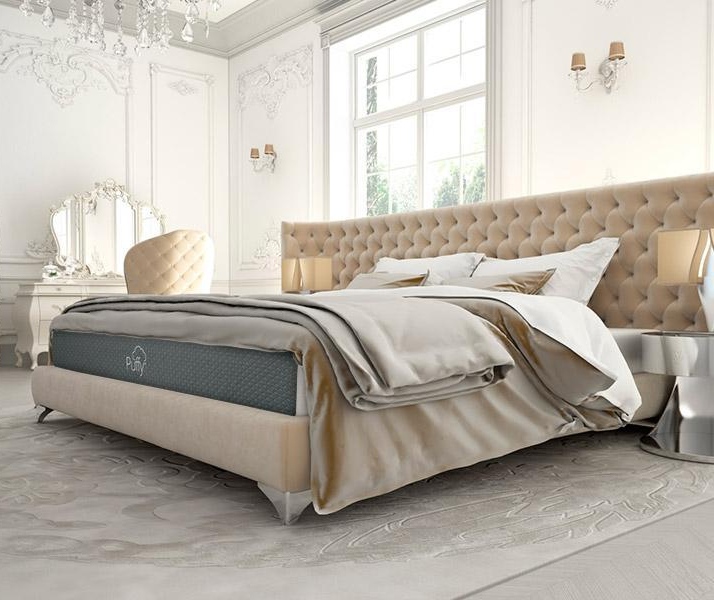
The Puffy Cloud Mattress
Puffy Mattress offers three models that deliver the best in class pressure relief, precision spinal alignment, with a sumptuous, nest-like feel. Uses top of the line luxury components and textiles, safer, low VOC and formaldehyde free Certi-Pur foam.
I loved the Puffy Cloud and their Lux Model. The gel foam allows your spine and neck to be properly supported, reducing the risk of sleep induced migraines. I also slept deeper that on my coil mattress.
A side and back sleeper’s fantasy mattress. They offer free shipping, a great trial period, with a no-nonsense warranty.
As a mattress designer myself, I’m picky, but this is my #1 Choice For Overall Best Mattress Line. I give it a solid 4.9 Rating out of 5, after sorting through 6,572 Online Reviews From Actual Owners. Queen $1,049 with free shipping.
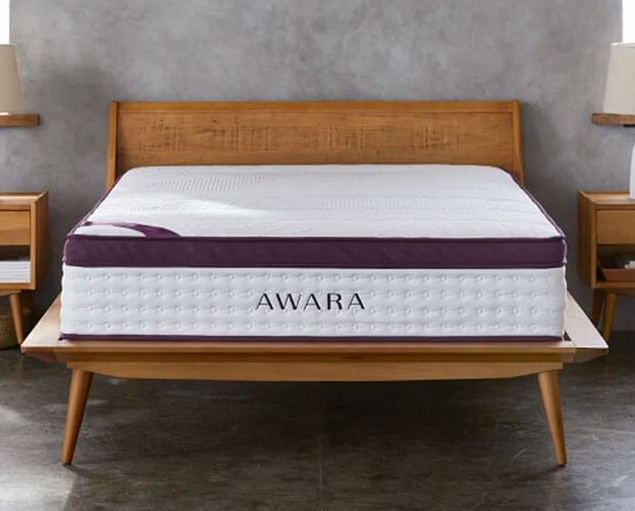
The Awara Natural Latex Hybrid Mattress
This outstanding natural latex hybrid bed is loaded with clean, chemical free ingredients. If you are fragrant sensitive or have allergies, which can trigger migraines, you need to invest in this clean and green mattress option.
You’ll nest upon a breathable organic quilted top, and beneath you, your body floats on 4” of botanical Dunlop latex.
Individually pocketed coils suspend and hover you above the base layer of medium high density foam that won’t break down.
Delivered with 365 day no questions asked trial and lifetime warranty Our #1 Hybrid Natural Latex/Coil Choice. I gave it 5 out of 5 stars for its well thought out design and components choice.

Habitat Furnishings Ascend Air Bed And Mirage Waterbed System
Habitat Furnishings offers the best digital sleep number style airbed on the market. For half the price of the big name brand, you’ll get a mattress that lets you control an infinite range of soft to firm settings.
The bed is made with both natural latex and premium memory foam, and includes a quilted bamboo comforter top built right in! LED remote controls with memory setting. A 90 Day Free Trial, solid warranty, made in USA!
Because you can control your side of the bed by adding or lowering pressure, you can also adjust to a perfect memory setting on the remote-reducing migraine triggers.
Airbeds and waterbeds are both well known in the migraine community for being very effective. Worth a serious look.
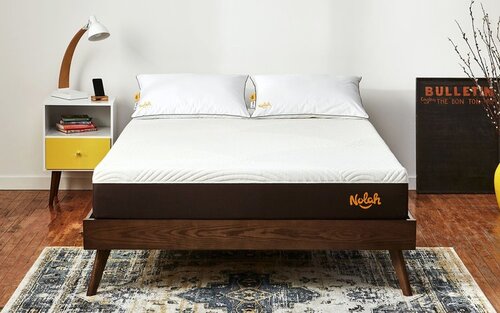
The Nolah Mattress
Soft and sumptuous, and built for side and side/back sleepers, The Nolah Mattress is made with clean ingredients, including a specialized material called cooling AirFoam™.
It’s scientifically proven to provide 4x better pressure relief on hips, shoulders, and back. This can contribute to vast reductions in migraine triggers. Also, the company donates proceeds various wildlife management organizations. A good way to give back. $125 off, lifetime warranty, and a solid 120 night trial.
Because it sleeps FAR cooler than almost any mattress out there, we gave it a solid 4.5 out of 5 stars.
Sweetnight Prime Mattress
Because it’s flippable, it has multiple levels of comfort so you can choose firm or soft. Certi-PurUS foams throughout, $950 in queen. Excellent for head and neck pain and reduction in migraine pain frequency and duration.
I like the quality of the gel foam used in this brand. My favorite side is the softer feel, and when used with a low profile pillow, you should experience relief and better sleep.
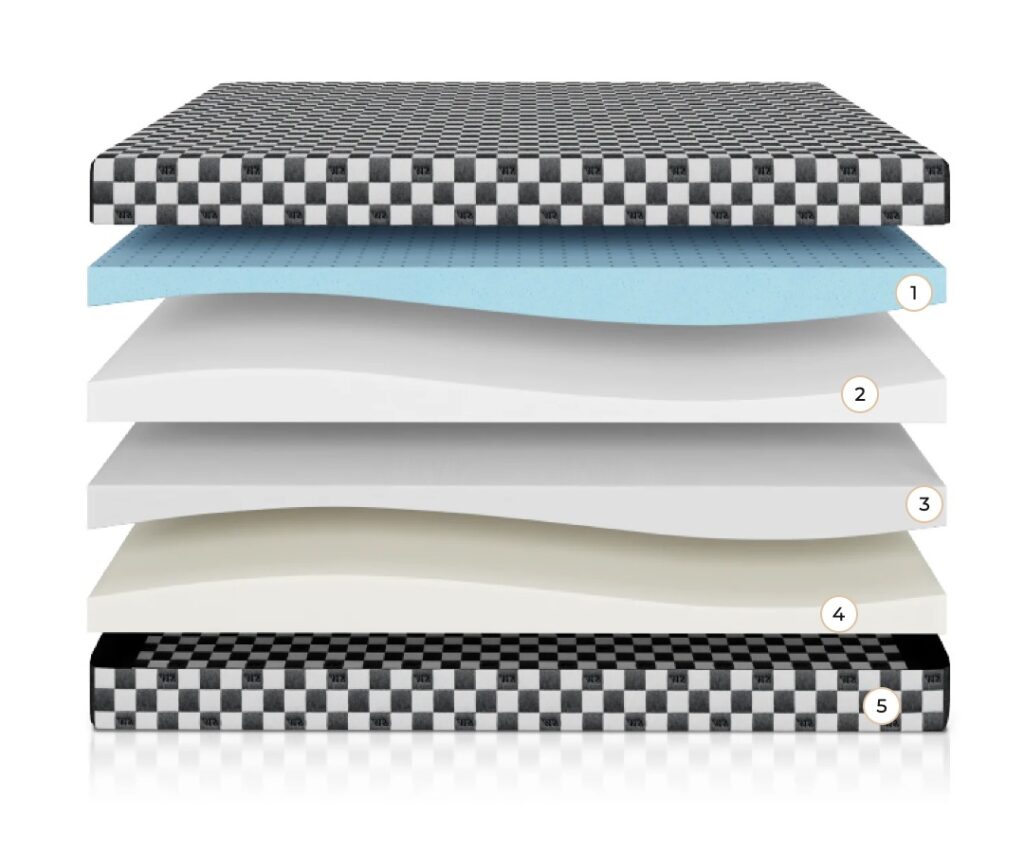
The Level Sleep Mattress
The Level Sleep Mattress was designed to cradle and support the human form. Three different areas of firmness reduce causes of back pain by applying low pressure and maintaining spine alignment simultaneously-reducing migraine triggers.
Soft at shoulders, firmer back support, and medium torso. Certi-Pur foam layers, made in USA. 365 night trial. King just $1399 with deal. Hip pain? Get it. 10% off with Marc’s Deal (That’s $140 Off!)
The Level Sleep Mattress: Three Zones Reduce Pain
Because it offers specific zoned support to head and neck as well as spine, it can really help with migraine triggers. We rate it 4.5 out of 5 stars for the technology and the precision targeting for your body.
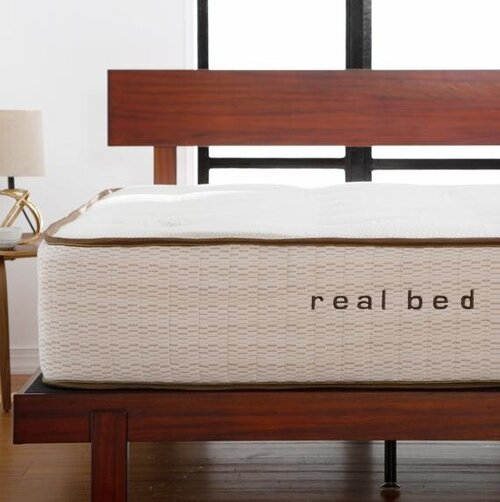
The Real Bed- Supernatural Comfort For Couples
An outstanding natural mattress that delivers supernatural comfort and levitating support. An organic outer quilted cover, a layer of eucalyptus infused rayon that cools, organic wool, 3” of pure botanical latex all floating above a pocketed coil system that evenly supports your body. Supports your spine with pinpoint precision. Compare at $1800 and up. Queen $950, click here and use coupon code to get another $50 off. Our #1 choice for a mattress for couples.
Diamond Sage Organic Latex Mattress
An organic latex and pocket coil mattress, medium supportive feel- no VOC’s or chemicals. At the thickest point, the Diamond Sage mattress has a 4.0″ comfort layer. The top layer is a 1.0″ quilted cover followed by two slabs of latex foam. The first slab is a thicker 2.0″ latex and the following layers is a 1.0″ latex foam with a higher density.
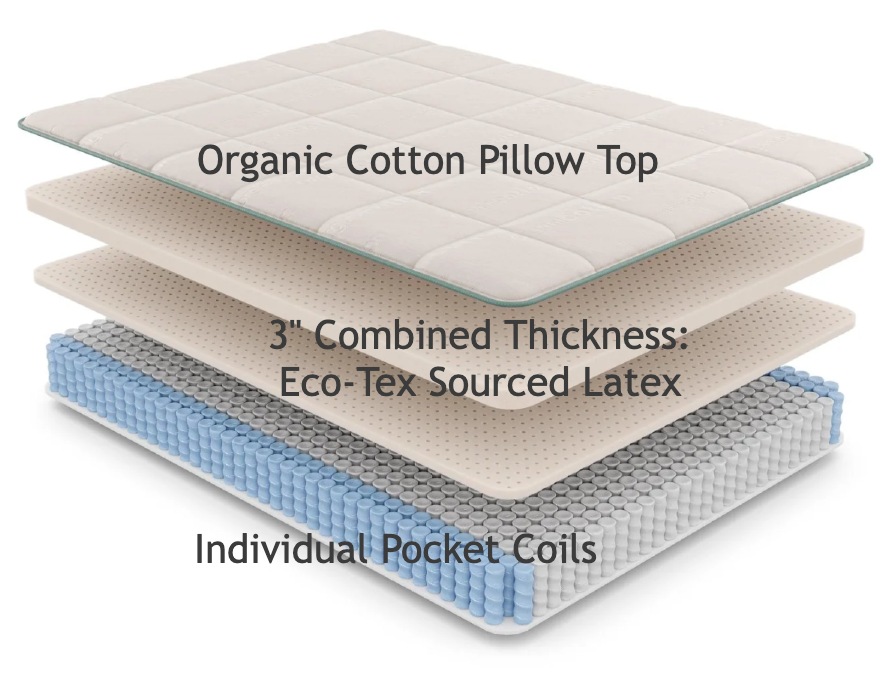
Queen costs $1699, King $1899. Well worth it if your don’t tolerate chemical smells, and I like the springiness, shoulder, head, and hip support for headaches, neck pain, even arthritis.
The Best Mattresses For Migraine Headaches: Why Sleep Is A Critical Component To Reduce Migraine Frequency
Yes, poor sleep can contribute to migraines or headaches in general. Sleep disturbances and insufficient sleep have been identified as potential triggers for migraines and headaches. The best mattress for migraine headaches provide deeper, longer, and more restorative sleep. Here’s how poor sleep can impact headaches:
- Disrupted sleep patterns: Irregular sleep patterns, such as irregular sleep schedules or inadequate sleep duration, can disrupt the body’s natural circadian rhythm. This disruption can affect the release of certain hormones and neurotransmitters, potentially increasing the risk of headaches or migraines.
- Increased vulnerability: Lack of quality sleep can make individuals more susceptible to various triggers, including stress, certain foods, and sensory stimuli, which can trigger headaches or migraines. Sleep deprivation can lower the pain threshold, making individuals more sensitive to pain.
- Muscle tension and poor posture: Poor sleep posture or uncomfortable sleeping surfaces can lead to muscle tension and stiffness, particularly in the neck and shoulders. This tension can contribute to tension-type headaches.
- Sleep disorders: Certain sleep disorders, such as sleep apnea, can disrupt sleep and lead to oxygen deprivation, fragmented sleep, and headaches upon waking.
- Medication side effects: Some medications used to treat sleep disorders or aid in sleep can have side effects that include headaches or migraines.
It’s important to maintain good sleep hygiene practices to support overall health and minimize the risk of headaches. This includes establishing a consistent sleep schedule, creating a comfortable sleep environment, practicing relaxation techniques before bed, and avoiding stimulants like caffeine close to bedtime.
If poor sleep and headaches persist, it’s advisable to consult with a healthcare professional to determine the underlying causes and develop an appropriate treatment plan.
If you’ve exhausted all treatment options, or aren’t satisfied with treatment results, consider going to the source, which might be as simple as starting from scratch with a new mattress. The best mattresses for migraine headaches generally include a softer, more yielding feel that cradles and conforms to your body.
Pro tip: Opt for a softer mattress than you might be used to.

